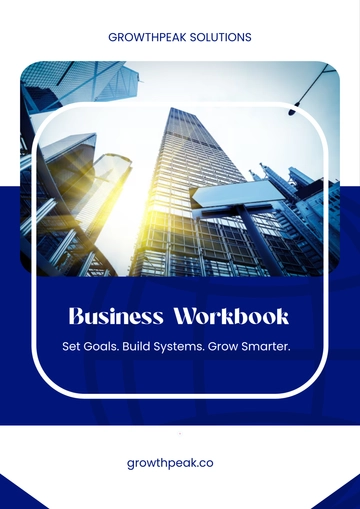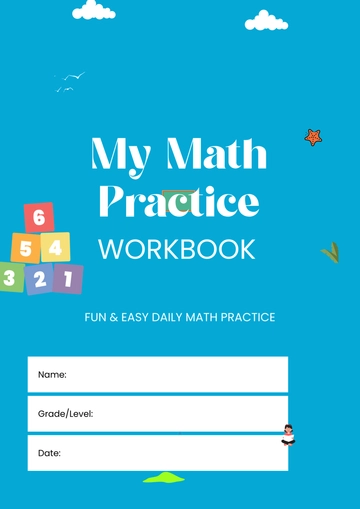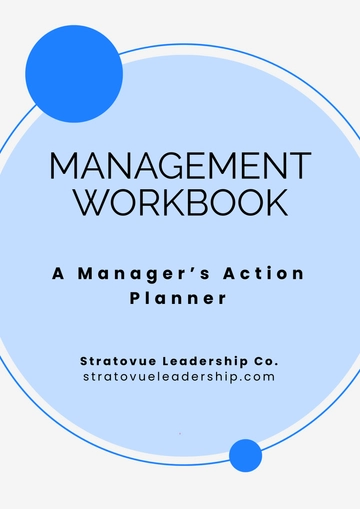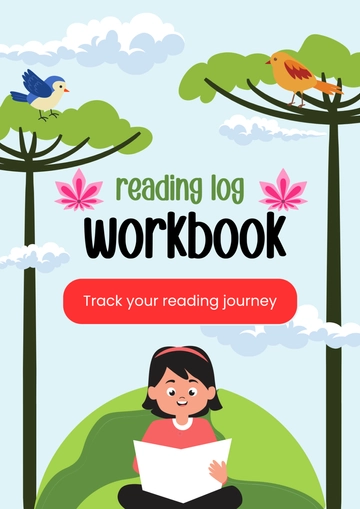Free Advanced Influencer Strategy Advertising Workbook
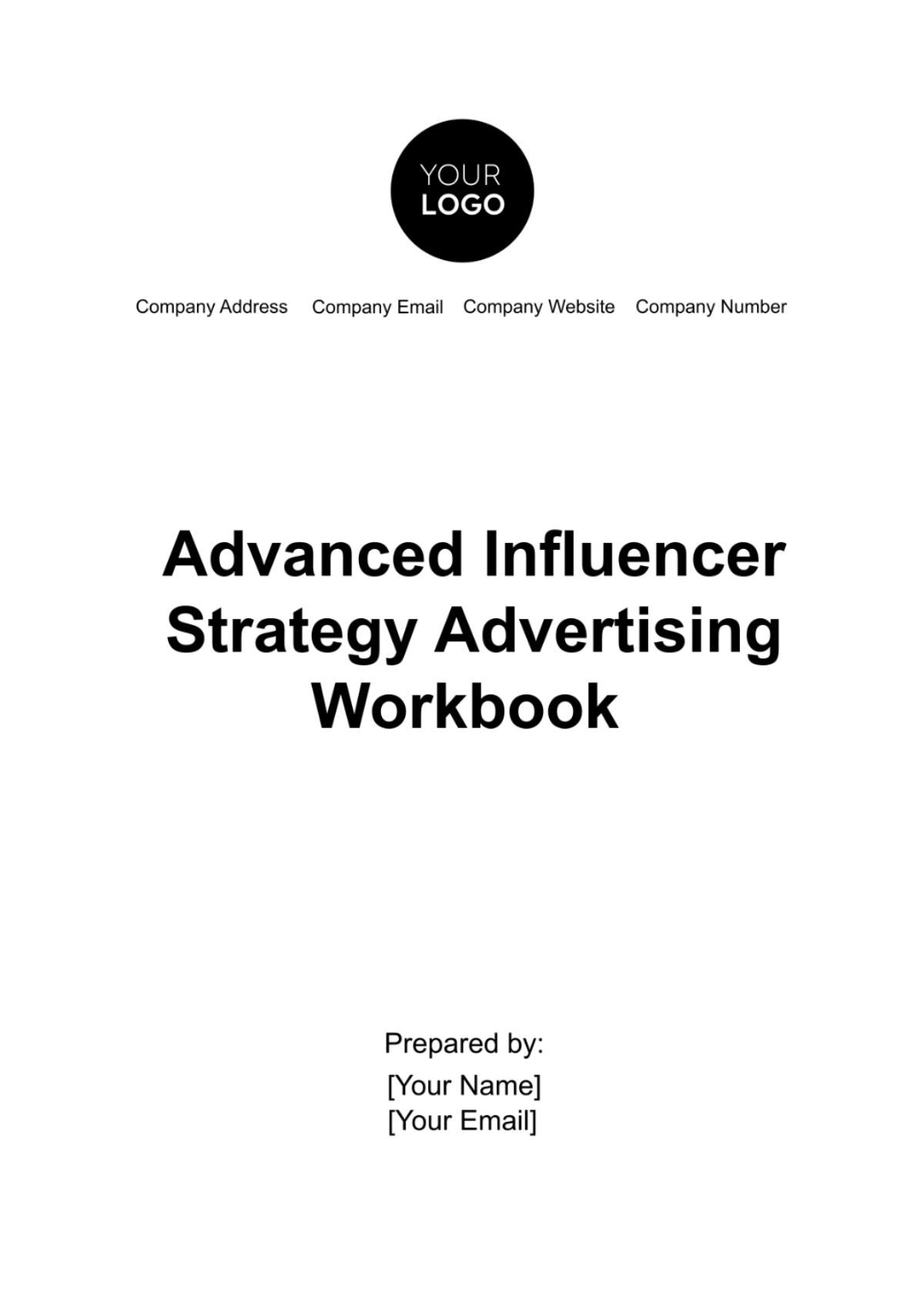
1. Introduction
Influencer marketing has emerged as a key strategy for building brand presence and driving consumer engagement. Recognizing this, [Your Company Name] seeks to harness the full potential of influencer collaborations. To facilitate this, we have developed a comprehensive Advanced Influencer Strategy Advertising Workbook. This resource is meticulously designed to navigate [Your Company Name] through the multifaceted process of planning, executing, and evaluating influencer marketing campaigns.
This workbook serves as an invaluable guide, providing a structured approach to developing sophisticated influencer marketing strategies. It encompasses a broad range of actionable steps, from initial influencer identification to post-campaign analysis. By offering a blend of theoretical insights and practical tools, this workbook is tailored to meet the dynamic needs of modern marketing initiatives.
Key features include detailed criteria for influencer selection, focusing on aspects such as follower demographics, engagement rates, and brand alignment. The workbook also presents a framework for setting clear campaign objectives, aligned with measurable Key Performance Indicators (KPIs), ensuring that each campaign is goal-oriented and results-driven. Additionally, it includes templates for budget planning and content strategy, streamlining the operational aspects of campaign management.
Furthermore, the workbook emphasizes the importance of performance monitoring and analysis. It provides tools for tracking a variety of metrics pre-, mid-, and post-campaign, offering insights into the effectiveness of each strategy. This data-driven approach ensures continuous refinement and optimization of marketing efforts.
In essence, this workbook is crafted to empower [Your Company Name] with the knowledge and tools necessary for executing impactful influencer marketing strategies. It aims to turn the complexities of influencer marketing into structured, manageable processes, enabling the team to achieve measurable success in their advertising endeavors.
2. Influencer Identification Process
The first critical step in [Your Company Name]'s influencer marketing strategy is the identification and selection of appropriate influencers. This chapter of the workbook is dedicated to establishing a clear and systematic process for influencer identification. To ensure that the selected influencers align perfectly with our brand's goals and values, we have developed a structured set of criteria. This includes factors such as follower count, engagement rate, audience demographics, and brand alignment. Each factor is assigned a priority level, allowing for a balanced and strategic approach to influencer selection.
Table: Criteria for Influencer Selection
Factor | Description | Priority Level (High/Medium/Low) |
Follower Count | Number of followers an influencer has, indicating their reach. | |
Engagement Rate | Average level of interaction per post, reflecting audience engagement. | |
Audience Demographics | Age, location, and interests of the influencer's audience, ensuring alignment with the target market. | |
Brand Alignment | The degree to which an influencer’s values and content align with [Your Company Name]'s brand. |
1. Follower Count: This metric provides insight into the potential reach of an influencer. A high follower count is often prioritized for broad awareness campaigns.
2. Engagement Rate: More important than sheer numbers, engagement rate measures how interactively an influencer's audience engages with their content. This is crucial for campaigns aiming for deep audience connection.
3. Audience Demographics: Matching the influencer's audience with our target market is vital. This includes considering factors like age, location, and interests to ensure our message reaches the intended audience.
4. Brand Alignment: The influencer's values and style must resonate with [Your Company Name]'s branding. This ensures authenticity and consistency in the message delivered.
This structured approach enables [Your Company Name] to select influencers who are not only popular but also relevant and effective for our specific marketing goals. By prioritizing these factors, we can streamline the selection process and foster successful influencer collaborations.
3. Campaign Planning
Effective campaign planning is fundamental to the success of [Your Company Name]'s influencer marketing efforts. This section of the workbook focuses on setting clear objectives for each campaign and defining specific Key Performance Indicators (KPIs) to measure success. By establishing these benchmarks, we can ensure that our campaigns are strategically aligned with our business goals and are quantifiably effective.
Table: Campaign Objectives and KPIs
Objective | Key Performance Indicator (KPI) | Target Figure |
Increase Brand Awareness | Social Media Mentions, Followers Gained | [Enter Target Figure: e.g., 20% increase in mentions, 10,000 new followers] |
Drive Sales | Conversion Rate, Sales Volume | [Enter Target Figure: e.g., 5% increase in conversion rate, $[000.00] in sales] |
Enhance Engagement | Likes, Comments, Shares | [Enter Target Figure: e.g., 30% increase in total engagement] |
1. Increase Brand Awareness:
KPIs: Social media mentions and followers gained. These metrics indicate the reach and growth of [Your Company Name]'s brand presence on social media platforms.
Target Figure: Set specific goals like a 20% increase in brand mentions and acquiring 10,000 new followers, providing a clear benchmark to strive for.
2. Drive Sales:
KPIs: Conversion rate and sales volume. These indicators measure the effectiveness of the campaign in converting engagements into actual sales.
Target Figure: Aiming for a 5% increase in conversion rate and setting a specific sales target (e.g., $[000.00]) helps in quantifying the campaign's impact on revenue.
3. Enhance Engagement:
KPIs: Likes, comments, and shares. This reflects the level of audience interaction and engagement with the content.
Target Figure: Targeting a 30% increase in overall engagement provides a clear goal for enhancing audience interaction with the campaign.
Through this systematic approach to campaign planning, [Your Company Name] can set achievable, specific goals, allowing for a focused and measurable influencer marketing strategy. This planning phase is crucial in aligning the campaign with the overarching marketing objectives of the company.
4. Budget Planning
A critical component of [Your Company Name]'s influencer marketing strategy is effective budget planning. This chapter of the workbook is dedicated to outlining and managing the financial aspects of influencer campaigns. It involves allocating a planned budget for various campaign elements, tracking actual spend, and analyzing the variance. This approach ensures financial accountability and provides insights into budget optimization for future campaigns.
Table: Budget Allocation and Tracking
Item | Planned Budget | Actual Spend | Variance |
Influencer Fees | $[000.00] | $[000.00] | $[000.00] |
Content Production | |||
Miscellaneous | |||
Total | $[000.00] | $[000.00] | $[000.00] |
1. Influencer Fees:
Planned Budget: Estimated cost allocated for influencer partnerships.
Actual Spend: The actual amount paid to influencers.
Variance: Difference between the planned budget and actual spend, indicating negotiation outcomes or changes in campaign scope.
2. Content Production:
Planned Budget: Funds set aside for creating content, including photography, videography, and editing.
Actual Spend: The total expenditure on content creation.
Variance: Highlights the efficiency in content production and possible areas for cost reduction.
3. Miscellaneous:
Planned Budget: Covers unforeseen expenses, emergency funds, and ancillary costs.
Actual Spend: Actual amount spent on miscellaneous items.
Variance: Indicates the need for contingency planning or adjustments in budget allocation.
By meticulously planning and tracking the budget, [Your Company Name] can maintain a financially disciplined approach towards influencer marketing campaigns. This detailed budget analysis allows for better financial control and provides valuable insights for future campaign budgeting.
5. Content Strategy
This chapter of the workbook focuses on developing a robust content strategy for [Your Company Name]'s influencer marketing campaigns. A well-planned content strategy outlines the types of content to be created, the channels for distribution, the frequency of posting, and any additional notes or guidelines. This strategic planning ensures that the content resonates with the target audience and maximizes the impact of the campaign.
Table: Content Strategy Planning
Content Type | Distribution Channel | Frequency | Notes |
Blog Posts | Website, Email | Weekly | [Enter Additional Notes: e.g., Topics to align with current trends, SEO optimization strategies] |
Social Media Posts | Instagram, TikTok | Daily | [Enter Additional Notes: e.g., Interactive content like polls, stories for higher engagement][Enter Additional Notes: e.g., Interactive content like polls, stories for higher engagement] |
Video Content | YouTube, Instagram | Bi-Weekly | [Enter Additional Notes: e.g., Focus on high-quality visuals, storytelling elements] |
1. Blog Posts:
Distribution: Posted on the website and shared via email.
Frequency: A weekly schedule to keep the audience regularly engaged.
Notes: Focus may include aligning topics with current trends and implementing SEO strategies to increase visibility.
2. Social Media Posts:
Distribution: Primarily through visually-driven platforms like Instagram and TikTok.
Frequency: Daily posts to maintain a consistent presence and engagement.
Notes: Content should be interactive, utilizing features like polls and stories to foster higher audience interaction.
3. Video Content:
Distribution: Platforms that support longer format content like YouTube, supplemented by Instagram for shorter clips.
Frequency: Bi-weekly to balance content quality with audience engagement.
Notes: Emphasis on high-quality visuals and storytelling to captivate the audience.
This content strategy framework allows [Your Company Name] to produce varied and engaging content that not only aligns with the influencers’ strengths but also resonates with the target audience. By diversifying content types and optimizing distribution channels, the company can effectively amplify its message and achieve its marketing objectives.
6. Performance Monitoring and Analysis
For [Your Company Name], the ability to accurately monitor and analyze the performance of influencer marketing campaigns is crucial. This chapter focuses on tracking various key metrics at different stages of the campaign – before, during, and after – to assess effectiveness and make data-driven decisions. This approach enables a comprehensive understanding of the campaign's impact on the brand's marketing objectives.
Table: Performance Metrics Tracking
Metric | Pre-Campaign Value | Mid-Campaign Value | Post-Campaign Value |
Website Traffic | 10,000 | ||
Engagement Rate | 10% | ||
Conversion Rate | 10% |
1. Website Traffic:
Pre-Campaign Value: Baseline traffic before the influencer campaign begins.
Mid-Campaign Value: Traffic during the campaign, indicating initial impact.
Post-Campaign Value: Final traffic count, showing the campaign's overall effect on website visits.
2. Engagement Rate:
Pre-Campaign Value: Initial engagement rate, setting the benchmark for the campaign.
Mid-Campaign Value: Engagement during the campaign, showing how the content resonates with the audience.
Post-Campaign Value: Final engagement rate, indicating the lasting impact of the campaign on audience interaction.
3. Conversion Rate:
Pre-Campaign Value: Original conversion rate, serving as a reference point.
Mid-Campaign Value: Conversion rate at the campaign's peak, revealing the effectiveness of the ongoing strategy.
Post-Campaign Value: Final conversion rate, demonstrating the campaign's success in driving desired actions (e.g., sales, sign-ups).
By tracking these metrics, [Your Company Name] gains valuable insights into the influencer campaign's performance, allowing for adjustments and improvements in real-time. This process not only enhances the current campaign's effectiveness but also informs strategies for future campaigns, leading to continuous improvement in influencer marketing efforts.
7. ROI Calculation
Calculating the Return on Investment (ROI) is a vital component in evaluating the success of [Your Company Name]'s influencer marketing campaigns. This chapter provides a clear framework for understanding the financial returns relative to the investment made. Accurately calculating the ROI helps in assessing the campaign's effectiveness and justifies future marketing investments.
Table: ROI Calculation Breakdown
Description | Amount |
Total Revenue | $[000.00] |
Total Investment | $[000.00] |
ROI | [Percentage]% |
1. Total Revenue:
This represents the total income generated as a direct result of the influencer marketing campaign. It includes increased sales, new customer acquisitions, and other revenue streams attributable to the campaign.
Amount: $[000.00] (Placeholder for actual revenue figure)
2. Total Investment:
The total amount spent on the influencer marketing campaign. This encompasses influencer fees, content production costs, any associated marketing expenses, and other relevant costs.
Amount: $[000.00] (Placeholder for the total investment figure)
3. ROI (Return on Investment):
The ROI is calculated as a percentage and reflects the efficiency and effectiveness of the investment in the influencer marketing campaign.
Calculating ROI provides [Your Company Name] with a quantifiable measure of the influencer campaign's success. Understanding the ROI is essential for making informed decisions about future marketing strategies and budget allocations. This calculation not only demonstrates the value generated from the campaign but also guides the optimization of future marketing efforts for better financial outcomes.
8. Conclusion
This workbook serves as a dynamic tool for [Your Company Name] to strategically plan, execute, and evaluate influencer marketing campaigns. It ensures structured campaign management, enabling the team to make data-driven decisions and adapt strategies for optimal results.
[Your Company Name]
[Your Company Address]
[Your Company Phone Number] | [Your Company Email]
[Your Company Website] | [Your Social Media]
This document is intended for internal use by [Your Company Name]. Unauthorized distribution or use is prohibited.
- 100% Customizable, free editor
- Access 1 Million+ Templates, photo’s & graphics
- Download or share as a template
- Click and replace photos, graphics, text, backgrounds
- Resize, crop, AI write & more
- Access advanced editor
Discover Template.net's Advanced Influencer Strategy Advertising Workbook Template: an editable and customizable tool tailored for optimizing your influencer campaigns. With intuitive features and editable sections, craft personalized strategies effortlessly. Editable in our Ai Editor Tool, it empowers you to refine your approach and maximize your influencer marketing impact with ease.













